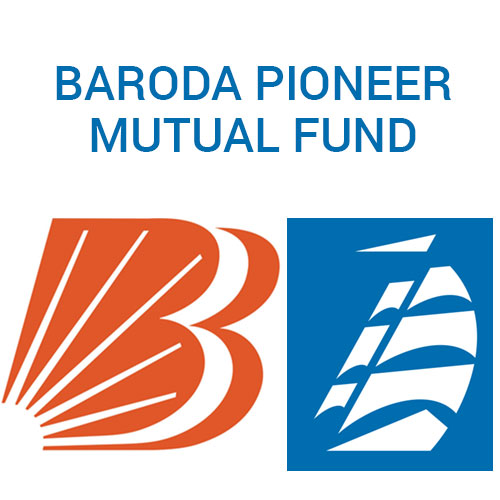Dynamic Asset Allocation Mutual Funds
Find here some best Dynamic Asset Allocation fund to invest
- Annual Returns 9.73%
- Average Risk Medium
- Total Funds 29
What is Dynamic Asset Allocation Mutual Fund?
Dynamic asset allocation funds are also known as balanced advantage funds. These are kind of hybrid funds as they invest in multiple asset classes like equity, debt, and commodities. These funds are one the best under this category to invest in as the fund manager has the flexibility to change the portfolio allocation according to the market conditions. Like in favorable market conditions, the allocation may shift to equity to maximize returns and during market falls more money shifts to debt class. The average return for 3 years remains between 10-12%, and it is classified as a moderately low-risk investment option.
More
Top 5 Dynamic Asset Allocation Funds for 2-3X Returns in 5 Yrs
Latest Recommendation By Team of ExpertsTop Performing Dynamic Asset Allocation Funds in India for High Returns
Returns
SIP Returns
Risk
Information
NAV Details
Data in this table : Get historical returns. If 1Y column is 10% that means, fund has given 10% returns in last 1 year.
Select date points :
Submit| Fund Name | AUM (Cr.) | Fund Age | 1W | 1M | 3M | 6M | YTD | 1Y | 2Y | 3Y | 5Y | 10Y | |
|---|---|---|---|---|---|---|---|---|---|---|---|---|---|
| 65710.61 | 18 years | 1.03% | 2.27% | 3.49% | 11.12% | 9.34% | 7.01% | 14.21% | 13.56% | 14.6% | 11.34% | Invest | |
| 1811.88 | 2 years | 1.02% | 1.55% | 2.71% | 10.15% | 5.62% | 5.72% | 14.41% | - | - | - | Invest | |
| 2510.44 | 1 years | 0.1% | 0.27% | 0.87% | 4.4% | 4.57% | 5.33% | - | - | - | - | Invest | |
| 8208.05 | 25 years | 1.03% | 1.67% | 2.28% | 10.06% | 7.75% | 4.52% | 13.25% | 13.05% | 13.91% | 11.27% | Invest | |
| 3503.00 | 11 years | 0.74% | 1.19% | 1.97% | 7.27% | 6.1% | 4.51% | 12.64% | 11.4% | 10.75% | 9.09% | Invest | |
| 36673.43 | 4 years | 1.04% | 1.49% | 1.55% | 7.73% | 5.62% | 4.16% | 12.49% | 13.7% | - | - | Invest | |
| 2999.85 | 2 years | 1.27% | 1.9% | 2.23% | 8.86% | 6.57% | 4.01% | 11.87% | - | - | - | Invest | |
| 805.91 | 3 years | 1.26% | 1.86% | -0.2% | 7.76% | 3.42% | 3.85% | 9.94% | 10.42% | - | - | Invest | |
| 2738.36 | 3 years | 0.81% | 1% | 1.36% | 7.77% | 3.3% | 3.6% | 12.77% | 13.28% | - | - | Invest | |
| 9317.08 | 20 years | 1.42% | 2.49% | 3.44% | 9.82% | 6.35% | 3.45% | 13.52% | 12.65% | 13.75% | 10.56% | Invest | |
| 4331.79 | 6 years | 1.78% | 1.83% | 1.8% | 11.63% | 4.59% | 3.43% | 13.76% | 14.24% | 14.34% | - | Invest | |
| 17339.32 | 7 years | 1.21% | 1.73% | 1.73% | 9.3% | 4.3% | 3.41% | 12.16% | 12.06% | 11.97% | - | Invest | |
| 2268.12 | 10 years | 1.02% | 1.74% | 2.45% | 8.46% | 3.17% | 3.36% | 11.31% | 10.78% | 10.56% | 8.85% | Invest | |
| 394.00 | 5 years | 1.26% | 2.45% | 2.33% | 8.43% | 3.64% | 2.78% | 12.72% | 12.28% | 11.49% | - | Invest | |
| 101079.60 | 25 years | 1.36% | 1.73% | 1.69% | 9.61% | 4.7% | 2.69% | 16.8% | 18.89% | 23.71% | 15.05% | Invest | |
| 3489.45 | 8 years | 0.95% | 1.58% | 1.78% | 7.08% | 4.18% | 2.67% | 14.97% | 13.96% | 13.31% | - | Invest | |
| 1554.28 | 14 years | 0.82% | 1.11% | 2.09% | 8.33% | 1.82% | 2.63% | 12.16% | 12.04% | 10.04% | 8.21% | Invest | |
| 9825.94 | 6 years | 0.87% | 1.04% | 1.94% | 7.88% | 4.61% | 2.41% | 11.61% | 12.52% | 14.2% | - | Invest | |
| 1044.74 | 17 years | 1.17% | 1.43% | 2.61% | 8.94% | 2.32% | 2.4% | 13.56% | 13.24% | 13% | 9.66% | Invest | |
| 964.70 | 4 years | 0.97% | 1.3% | 2.03% | 10.36% | 5.93% | 1.9% | 10.12% | 9.79% | - | - | Invest | |
| 907.26 | 3 years | 0.99% | 1.72% | 1.92% | 9.96% | 3.3% | 1.56% | 13.04% | 12.87% | - | - | Invest | |
| 9825.94 | 6 years | 0.85% | 0.93% | 1.61% | 7.19% | 3.66% | 1.11% | 10.14% | 10.98% | 12.51% | - | Invest | |
| 12791.71 | 16 years | 1.14% | 1.9% | 2.39% | 8.76% | 4.09% | 0.59% | 12.29% | 12.31% | 13.84% | 10.79% | Invest | |
| 1411.80 | 1 years | 1.17% | 1.56% | 2.16% | 9.24% | 3.69% | 0.1% | - | - | - | - | Invest | |
| 1278.11 | 1 years | 1.24% | 2.27% | 1.7% | 9.37% | 5.39% | -0.24% | - | - | - | - | Invest | |
| 138.66 | 11 years | 1.19% | 1.76% | 1.98% | 9.01% | 4.91% | -0.58% | 9.98% | 10.75% | 11.3% | 7.22% | Invest | |
| 1274.13 | 2 years | 1.23% | 1.48% | 1.93% | 11.64% | 3.64% | -4% | 19.68% | - | - | - | Invest | |
| 1021.86 | 8 years | 2.71% | 6% | 9.87% | 18.26% | 0.56% | -9.1% | 5.41% | 10.15% | 9.12% | - | Invest | |
| - | 2 days | - | - | - | - | - | - | - | - | - | - | Invest |
| Fund Name | AUM (Cr.) | Risk | 1W | 1M | 3M | 6M | YTD | 1Y | 2Y | 3Y | 5Y | 10Y |
|---|
| Fund Name | Sep-2025 | Aug-2025 | Jul-2025 | Jun-2025 | May-2025 | Apr-2025 | Mar-2025 | Feb-2025 | Jan-2025 | Dec-2024 | Nov-2024 | Oct-2024 |
|---|
| Fund Name | 2025-Q3 | 2025-Q2 | 2025-Q1 | 2024-Q4 | 2024-Q3 | 2024-Q2 | 2024-Q1 | 2023-Q4 | 2023-Q3 | 2023-Q2 | 2023-Q1 | 2022-Q4 |
|---|
| Fund Name | 2025 | 2024 | 2023 | 2022 | 2021 | 2020 | 2019 | 2018 | 2017 | 2016 | 2015 | 2014 | 2013 |
|---|
| Fund Name | AUM (Cr.) | Risk | 1W | 1M | 3M | 6M | YTD | 1Y | 2Y | 3Y | 5Y | 10Y |
|---|
| Fund Name | AUM (Cr.) | Initial NAV | Final NAV | NAV Change | Absolute Ret. | Annalized Ret. |
|---|
| Fund Name | AUM (Cr.) | Risk | 6M | 1Y | 2Y | 3Y | 5Y | 10Y | From Launch | |
|---|---|---|---|---|---|---|---|---|---|---|
| 65710.61 | Very High |
3.85%
|
13.59%
|
12.16%
|
13.54%
|
12.97%
|
12.24%
|
12.31%
|
Invest | |
| 1811.88 | Very High |
2.91%
|
10.82%
|
11.89%
|
-
|
-
|
-
|
13.54%
|
Invest | |
| 2510.44 | Moderate |
0.9%
|
6.24%
|
-
|
-
|
-
|
-
|
6.96%
|
Invest | |
| 8208.05 | High |
2.53%
|
10.66%
|
11.02%
|
12.72%
|
11.95%
|
11.4%
|
11.66%
|
Invest | |
| 3503.00 | Moderate |
1.96%
|
8.27%
|
10.01%
|
11.85%
|
10.46%
|
9.65%
|
9.4%
|
Invest | |
| 36673.43 | Moderately High |
1.57%
|
7.35%
|
8.75%
|
11.85%
|
-
|
-
|
12.11%
|
Invest | |
| 2999.85 | Very High |
2.45%
|
9.15%
|
9.82%
|
-
|
-
|
-
|
10.17%
|
Invest | |
| 805.91 | Very High |
0.89%
|
6.24%
|
8.07%
|
9.54%
|
-
|
-
|
9.62%
|
Invest | |
| 2738.36 | Very High |
1.72%
|
7.17%
|
8.97%
|
12.03%
|
-
|
-
|
12.06%
|
Invest | |
| 9317.08 | Very High |
2.92%
|
9.84%
|
9.95%
|
12.26%
|
11.88%
|
11.35%
|
12.29%
|
Invest | |
| 4331.79 | Very High |
2.27%
|
9.33%
|
9.93%
|
12.81%
|
12.61%
|
-
|
13.84%
|
Invest | |
| 17339.32 | Very High |
1.99%
|
7.93%
|
9.33%
|
11.25%
|
10.89%
|
-
|
11.42%
|
Invest | |
| 2268.12 | Very High |
2.31%
|
7.76%
|
8.74%
|
10.64%
|
9.76%
|
9.56%
|
9.29%
|
Invest | |
| 394.00 | Very High |
2.85%
|
7.55%
|
8.09%
|
10.96%
|
10.22%
|
-
|
10.14%
|
Invest | |
| 101079.60 | Average |
2.01%
|
8.02%
|
9.77%
|
15.55%
|
18.21%
|
16.5%
|
17.46%
|
Invest | |
| 3489.45 | Very High |
1.77%
|
6.76%
|
10.4%
|
13.5%
|
12.39%
|
-
|
11.23%
|
Invest | |
| 1554.28 | Moderately High |
2.06%
|
6.93%
|
8.45%
|
11.09%
|
10.35%
|
9.45%
|
10.23%
|
Invest | |
| 9825.94 | High |
2.13%
|
7.56%
|
8.16%
|
10.99%
|
11.8%
|
-
|
12.93%
|
Invest | |
| 1044.74 | Very High |
2.79%
|
7.46%
|
8.99%
|
12.15%
|
11.75%
|
10.48%
|
11.04%
|
Invest | |
| 964.70 | Very High |
2.75%
|
9.82%
|
9.13%
|
10.28%
|
-
|
-
|
9.7%
|
Invest | |
| 907.26 | Very High |
2.23%
|
7.71%
|
8.37%
|
11.9%
|
-
|
-
|
12.04%
|
Invest | |
| 9825.94 | High |
1.8%
|
6.21%
|
6.76%
|
9.51%
|
10.22%
|
-
|
11.27%
|
Invest | |
| 12791.71 | Very High |
2.56%
|
7.77%
|
8.24%
|
11.18%
|
11.2%
|
11.94%
|
11.34%
|
Invest | |
| 1411.80 | Very High |
2.26%
|
7.23%
|
-
|
-
|
-
|
-
|
5.56%
|
Invest | |
| 1278.11 | High |
2.07%
|
7.19%
|
-
|
-
|
-
|
-
|
5.3%
|
Invest | |
| 138.66 | Very High |
2.41%
|
7.5%
|
5.9%
|
9.02%
|
10.5%
|
8.45%
|
8.13%
|
Invest | |
| 1274.13 | Very High |
1.77%
|
7.07%
|
8.18%
|
-
|
-
|
-
|
13.76%
|
Invest | |
| 1021.86 | High |
7.73%
|
9.37%
|
3.41%
|
7.5%
|
7.93%
|
-
|
7.98%
|
Invest | |
| Average |
-
|
-
|
-
|
-
|
-
|
-
|
-
|
Invest |
| Fund Name | Risk | Standard Deviation | Alpha | Beta | Sharpe Ratio | |
|---|---|---|---|---|---|---|
| Very High |
4.42%
|
6.05%
|
0.1%
|
1.19%
|
Invest | |
| Very High |
-
|
-
|
-
|
-
|
Invest | |
| Moderate |
-
|
-
|
-
|
-
|
Invest | |
| High |
6.2%
|
5.69%
|
0.1%
|
0.84%
|
Invest | |
| Moderate |
5.78%
|
-
|
-
|
0.67%
|
Invest | |
| Moderately High |
6.28%
|
-
|
-
|
0.94%
|
Invest | |
| Very High |
-
|
-
|
-
|
-
|
Invest | |
| Very High |
7.77%
|
-
|
-
|
0.33%
|
Invest | |
| Very High |
-
|
-
|
-
|
-
|
Invest | |
| Very High |
6.21%
|
5.03%
|
0.1%
|
0.8%
|
Invest | |
| Very High |
9.43%
|
-
|
-
|
0.66%
|
Invest | |
| Very High |
7.17%
|
-
|
-
|
0.57%
|
Invest | |
| Very High |
6.58%
|
-
|
-
|
0.45%
|
Invest | |
| Very High |
7.45%
|
-
|
-
|
0.52%
|
Invest | |
| Average |
9.18%
|
-
|
-
|
1.14%
|
Invest | |
| Very High |
7.64%
|
-
|
-
|
0.76%
|
Invest | |
| Moderately High |
6.70%
|
-
|
-
|
0.67%
|
Invest | |
| High |
6.60%
|
-
|
-
|
0.73%
|
Invest | |
| Very High |
7.47%
|
6.16%
|
0.08%
|
0.84%
|
Invest | |
| Very High |
8.38%
|
-
|
-
|
0.28%
|
Invest | |
| Very High |
8.52%
|
-
|
-
|
0.59%
|
Invest | |
| High |
6.59%
|
-
|
-
|
0.52%
|
Invest | |
| Very High |
8.15%
|
-
|
-
|
0.54%
|
Invest | |
| Very High |
-
|
-
|
-
|
-
|
Invest | |
| High |
-
|
-
|
-
|
-
|
Invest | |
| Very High |
11.45%
|
3.68%
|
0.04%
|
0.4%
|
Invest | |
| Very High |
-
|
-
|
-
|
-
|
Invest | |
| High |
13.46%
|
-
|
-
|
0.19%
|
Invest | |
| Average |
-
|
-
|
-
|
-
|
Invest |
| Fund Name | Min SIP | Min Lumpsum | Expense Ratio | Fund Manager | Launch Date | |
|---|---|---|---|---|---|---|
|
₹500
|
₹500
|
1.44%
|
Sankaran Naren
|
30-Dec 2006
|
Invest | |
|
₹100
|
₹500
|
2.09%
|
Piyush Baranwal
|
10-Feb 2023
|
Invest | |
|
₹1000
|
₹5000
|
0.63%
|
Rajeev Thakkar
|
27-Feb 2024
|
Invest | |
|
₹1000
|
₹100
|
1.8%
|
Lovelish Solanki
|
23-May 2000
|
Invest | |
|
₹100
|
₹100
|
1.93%
|
Laukik Bagwe
|
06-Feb 2014
|
Invest | |
|
₹500
|
₹5000
|
1.57%
|
Rajeev Radhakrishnan
|
31-Aug 2021
|
Invest | |
|
₹500
|
₹5000
|
1.96%
|
Anurag Mittal
|
10-Aug 2023
|
Invest | |
|
₹1000
|
₹5000
|
2.28%
|
Yogesh Patil
|
12-Nov 2021
|
Invest | |
|
₹500
|
₹5000
|
1.97%
|
Rahul Goswami
|
06-Sep 2022
|
Invest | |
|
₹500
|
₹100
|
1.74%
|
Ashutosh Bhargava
|
15-Nov 2004
|
Invest | |
|
₹500
|
₹5000
|
1.89%
|
Prashant R Pimple
|
13-Nov 2018
|
Invest | |
|
₹100
|
₹100
|
1.66%
|
Abhishek Bisen
|
03-Aug 2018
|
Invest | |
|
₹100
|
₹1000
|
2.04%
|
Manish Gunwani
|
10-Oct 2014
|
Invest | |
|
₹500
|
₹5000
|
2.37%
|
Vikrant Mehta
|
30-Dec 2019
|
Invest | |
|
₹100
|
₹100
|
1.35%
|
Anil Bamboli
|
11-Sep 2000
|
Invest | |
|
₹100
|
₹100
|
2%
|
Devang Shah
|
01-Aug 2017
|
Invest | |
|
₹500
|
₹5000
|
2.11%
|
Mahesh A Chhabria
|
07-Feb 2011
|
Invest | |
|
₹200000
|
₹5000
|
0.42%
|
Sailesh Jain
|
28-Jan 2019
|
Invest | |
|
₹500
|
₹1000
|
2.15%
|
Amit Ganatra
|
04-Oct 2007
|
Invest | |
|
₹1000
|
₹5000
|
2.18%
|
Puneet Pal
|
04-Feb 2021
|
Invest | |
|
₹500
|
₹1000
|
2.22%
|
Rahul Pal
|
30-Dec 2021
|
Invest | |
|
₹100
|
₹5000
|
1.7%
|
Sailesh Jain
|
28-Jan 2019
|
Invest | |
|
₹100
|
₹100
|
1.69%
|
Bhavesh Jain
|
20-Aug 2009
|
Invest | |
|
₹1000
|
₹5000
|
2.11%
|
Shridatta Bhandwaldar
|
06-Aug 2024
|
Invest | |
|
₹500
|
₹500
|
2.09%
|
Nimesh Chandan
|
08-Dec 2023
|
Invest | |
|
₹1000
|
₹5000
|
2.27%
|
Alok Singh
|
14-Mar 2014
|
Invest | |
|
₹1000
|
₹5000
|
2.12%
|
Sanjeev Sharma
|
12-Apr 2023
|
Invest | |
|
₹500
|
₹500
|
2.19%
|
Ankush Sood
|
27-Sep 2016
|
Invest | |
|
₹5000
|
₹5000
|
-
|
|
22-Sep 2025
|
Invest |
| Fund Name | Current NAV | Previous NAV | 1D NAV Change | 52- Week High NAV | 52- Week Low NAV | |
|---|---|---|---|---|---|---|
|
75.85
(18-09-2025)
|
75.68
(17-09-2025)
|
0.22%
|
75.85
|
67.08
|
Invest | |
|
14.537
(18-09-2025)
|
14.507
(17-09-2025)
|
0.21%
|
14.537
|
12.847
|
Invest | |
|
11.3736
(18-09-2025)
|
11.3735
(17-09-2025)
|
0%
|
11.3906
|
10.7602
|
Invest | |
|
107.84
(18-09-2025)
|
107.72
(17-09-2025)
|
0.11%
|
107.84
|
95.16
|
Invest | |
|
27.889
(18-09-2025)
|
27.857
(17-09-2025)
|
0.11%
|
27.889
|
25.5
|
Invest | |
|
15.5103
(18-09-2025)
|
15.4807
(17-09-2025)
|
0.19%
|
15.6081
|
14.1408
|
Invest | |
|
12.8364
(18-09-2025)
|
12.8037
(17-09-2025)
|
0.26%
|
12.8364
|
11.5647
|
Invest | |
|
13.7931
(18-09-2025)
|
13.7727
(17-09-2025)
|
0.15%
|
14.0028
|
12.384
|
Invest | |
|
14.4976
(18-09-2025)
|
14.4805
(17-09-2025)
|
0.12%
|
14.4976
|
13.2078
|
Invest | |
|
180.4135
(18-09-2025)
|
179.9526
(17-09-2025)
|
0.26%
|
180.413
|
160.572
|
Invest | |
|
24.6535
(18-09-2025)
|
24.6068
(17-09-2025)
|
0.19%
|
24.8758
|
21.2798
|
Invest | |
|
20.786
(18-09-2025)
|
20.775
(17-09-2025)
|
0.05%
|
-
|
-
|
Invest | |
|
24.556
(18-09-2025)
|
24.533
(17-09-2025)
|
0.09%
|
24.556
|
22.08
|
Invest | |
|
14.7382
(18-09-2025)
|
14.7063
(17-09-2025)
|
0.22%
|
14.7382
|
13.3618
|
Invest | |
|
523.963
(18-09-2025)
|
523.046
(17-09-2025)
|
0.18%
|
524.769
|
467.341
|
Invest | |
|
21.17
(18-09-2025)
|
21.14
(17-09-2025)
|
0.14%
|
21.17
|
19.31
|
Invest | |
|
43.8789
(18-09-2025)
|
43.7583
(17-09-2025)
|
0.28%
|
43.8789
|
39.8852
|
Invest | |
|
22.8855
(18-09-2025)
|
22.8412
(17-09-2025)
|
0.19%
|
22.9026
|
20.7915
|
Invest | |
|
54.58
(18-09-2025)
|
54.38
(17-09-2025)
|
0.37%
|
54.58
|
49.05
|
Invest | |
|
15.55
(18-09-2025)
|
15.53
(17-09-2025)
|
0.13%
|
15.61
|
13.73
|
Invest | |
|
14.5930
(18-09-2025)
|
14.5575
(17-09-2025)
|
0.24%
|
14.6986
|
13.0295
|
Invest | |
|
20.6187
(18-09-2025)
|
20.5796
(17-09-2025)
|
0.19%
|
20.7146
|
18.8651
|
Invest | |
|
51.4
(18-09-2025)
|
51.32
(17-09-2025)
|
0.16%
|
52.04
|
46.04
|
Invest | |
|
10.4000
(18-09-2025)
|
10.3800
(17-09-2025)
|
0.19%
|
10.5
|
9.29
|
Invest | |
|
11.454
(18-09-2025)
|
11.424
(17-09-2025)
|
0.26%
|
11.725
|
10.191
|
Invest | |
|
25.1430
(18-09-2025)
|
25.1002
(17-09-2025)
|
0.17%
|
25.84
|
22.4317
|
Invest | |
|
16.6779
(18-09-2025)
|
16.6174
(17-09-2025)
|
0.36%
|
17.5975
|
14.2629
|
Invest | |
|
20.9021
(18-09-2025)
|
20.7279
(17-09-2025)
|
0.84%
|
23.1449
|
17.0261
|
Invest | |
|
10.00
(2025-08-25)
|
()
|
0%
|
-
|
-
|
Invest |
Dynamic Asset Allocation Funds Return Calculator
Historical Returns
Future Value
Invested Amt.
+Net Profit
=Total Wealth
- Invested Amount
- Estimated Returns
- Invested Amount ₹43,855
- Interest Earned ₹6,145
Explore Other Popular Calculators
Join 50,000+ Investors Who Tested Their Suitability
Are Dynamic Asset Allocation Funds Suitable for You?
 Suitability Test?
Suitability Test?
Check Suitability of Dynamic Asset Allocation Funds for your Portfolio
Comparison of Top Dynamic Asset Allocation Funds
 BAJAJ FINSERV BALANCED ADVANTAGE FUND REGULAR PLAN GROWTH
3Y Returns 0%
VS
BAJAJ FINSERV BALANCED ADVANTAGE FUND REGULAR PLAN GROWTH
3Y Returns 0%
VS
 Edelweiss Balanced Advantage Fund - Regular Plan - Growth Option
3Y Returns 12.31%
Edelweiss Balanced Advantage Fund - Regular Plan - Growth Option
3Y Returns 12.31%
 BANDHAN Balanced Advantage Fund Regular Plan Growth
3Y Returns 10.78%
VS
BANDHAN Balanced Advantage Fund Regular Plan Growth
3Y Returns 10.78%
VS
 Edelweiss Balanced Advantage Fund - Regular Plan - Growth Option
3Y Returns 12.31%
Edelweiss Balanced Advantage Fund - Regular Plan - Growth Option
3Y Returns 12.31%
 Motilal Oswal Balance Advantage Fund (MOFDYNAMIC) - Regular Plan - Growth Option
3Y Returns 10.15%
VS
Motilal Oswal Balance Advantage Fund (MOFDYNAMIC) - Regular Plan - Growth Option
3Y Returns 10.15%
VS
 Edelweiss Balanced Advantage Fund - Regular Plan - Growth Option
3Y Returns 12.31%
Edelweiss Balanced Advantage Fund - Regular Plan - Growth Option
3Y Returns 12.31%
 Invesco India Dynamic Equity Fund - Growth
3Y Returns 13.24%
VS
Invesco India Dynamic Equity Fund - Growth
3Y Returns 13.24%
VS
 Edelweiss Balanced Advantage Fund - Regular Plan - Growth Option
3Y Returns 12.31%
Edelweiss Balanced Advantage Fund - Regular Plan - Growth Option
3Y Returns 12.31%
How Dynamic Asset Allocation Funds Works?
Security Board of Exchange (SEBI) has not set any limit for the allocation percentage of balanced advantage funds. These funds have the freedom to allocate any percentage of their assets, ranging from 0% to 100%, and can invest in both equity and debt.
In dynamic asset allocation, the fund manager changes the portfolio based on the market condition.
For Example- During a bear market when equities are falling, the fund manager might increase the allocation in debt. Similarly, if the Equity is doing well, the fund manager might increase the allocation in equity.
Advantages of Dynamic Asset Allocation Funds
There are multiple benefits balanced advantage Mutual Fund offers, here are some of them:
Freedom to Fund Manager
Dynamic asset allocation gives flexibility to fund manager that allows them to change their assets based on market volatility and opportunities. This allows them to make quick decisions that maximize returns.
It Adapts the Market Trends
This balanced advantage maintains the balance between their portfolio. In a bear market, a manager might put more money into debt and less into equity. However, when there is a bullish market a manager might choose to put less money into debt and more into equity.
Stable Returns
Dynamic asset allocation seeks to offer more stable returns over time by allowing investors to move their money between various asset classes. This helps investors achieve a balance between risk and reward, potentially enhancing long-term performance.
Good Risk Management
It reduces risk by shifting investments to safer assets during market downturns and improving allocation to growth assets during advantageous market conditions.
Fund for All Types of Investors
Dynamic asset allocation funds offer to a diverse group of investors with various risk tolerances and investment objectives. Whether conservative or aggressive, investors can discover a good alternative that matches their preferences and goals.
Opportunity Capture
It allows investors to capitalize on developing ideas and growth-oriented industries, thus enhancing overall portfolio performance.
How to Invest in Dynamic Asset Allocation Funds
Here are some simple steps to invest in dynamic asset allocation with mysiponline.com:
- Step 1: Register for free on MySIPonline.com and download the app.
- Step 2: After registration, click on the Explore Mutual Fund Section.
- Step 3: Select your preferred fund and add funds to your cart
- Step 4: Complete profile (PAN card, Aadhar number, bank details, nominee, signature)
- Step 5: Choose between Online SIP or lump sum investment options.
- Step 6: Make the Payment using UPI or net banking.
- Step 7: Track your investments daily and use our analysis tools.
Common Mistakes to Avoid While Investing in Dynamic Asset Allocation Funds
It is always important to take the necessary precautions before investing in these kinds of Hybrid Mutual Funds. In order to save you from making certain mistakes here are simple points that should be kept in mind.
Timing the Market
Trying to predict when the market will go up or down and constantly changing how you invest your money can cause you to miss the chances to make money and end up spending more on buying and selling investments.
Fear and Greed
These two emotions are frequently present and might have an impact on investing decisions. During market downturns, fear may cause investors to sell their holdings quickly, while greed may drive them to pursue large gains without taking related risks into account.
Risk Management
Failing to adequately consider and manage risks associated with dynamic asset allocation can expose your portfolio to unnecessary volatility and potential losses.
Confirmation bias
Confirmation bias is when investors only look for information that agrees with what they already believe, while ignoring anything that disagrees. This can make them miss important facts and make bad investment decisions. It's crucial for investors to stay open-minded and consider all information before making decisions.
Neglecting Regular Rebalancing
Failing to periodically rebalance your portfolio to maintain the desired asset allocation can lead to deviations from your investment objectives over time.
Not Matching with Investment Goals
Using dynamic asset allocation techniques to invest might result in less than ideal-results if they are not in line with your time horizon, investment objectives, and risk tolerance.
Conclusion
Successful dynamic asset allocation requires managing emotions, mitigating risks, rebalancing regularly, avoiding confirmation bias, and aligning investments with goals.
The Taxation on Dynamic Asset Allocation Funds
The capital gains from dynamic asset allocation funds are taxed differently depending on their equity holdings. If the equity investment is over 65%. On the other, the debt fund tax rules are implemented if the equity investment is less than 65%. Let’s understand how the tax implications are calculated with the table given below -
| Funds | Short Term (Less than 12 months) | Long Term (12 months and more) |
|---|---|---|
| Equity Based Funds | Taxed at 15% irrespective of Income Tax Slab | Up-to Rs 1 Lakh tax-exempt; above 1 Lakh Taxed at 10% |
| Debt Based Fund | Added to overall income,taxed at income tax slab rate | Taxed at 20% after indexation (36 months or more) |
For Equity-oriented funds
Short-term (Less than 12 months): Profits are taxed at a flat rate of 15%, regardless of the investor's income tax slab.
Long-term (12 months and more): Profits up to Rs.1 lakh are tax-exempt. Any gains above Rs.1 lakh are taxed at a rate of 10%.
For Debt-oriented funds
Short-term (Less than 36 months): Profits are added to the investor's overall income and taxed at the applicable income tax slab rate.
Long-term (36 months and more): Profits are taxed at a rate of 20% after indexation, which adjusts the purchase price for inflation.
Frequently Asked Questions
Explore Other Categories
By Equity-Debt Allocation
By Solutions
Top Videos and Blogs on Dynamic Asset Allocation Mutual Funds
Blogs

































 Suitability Result
Suitability Result


 You can select three funds for compare.
You can select three funds for compare.


